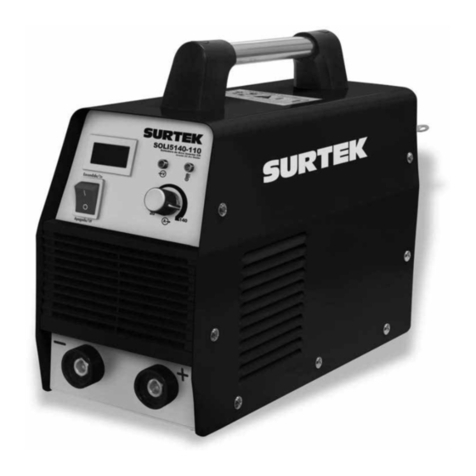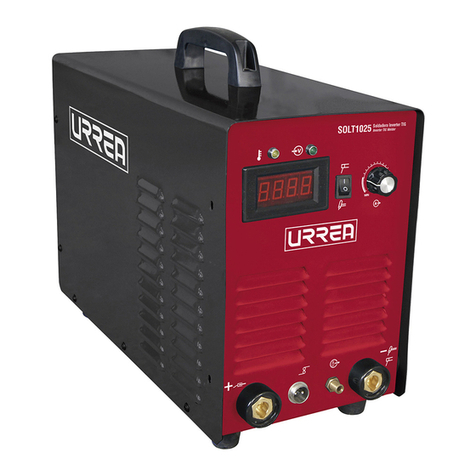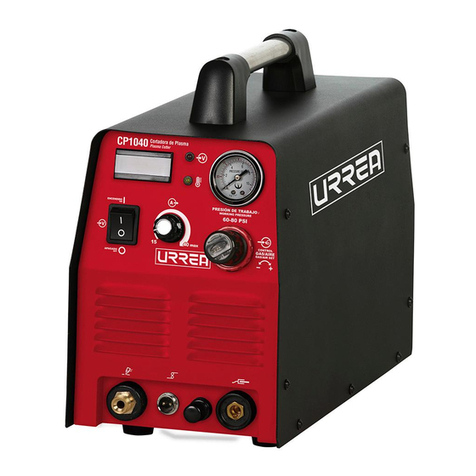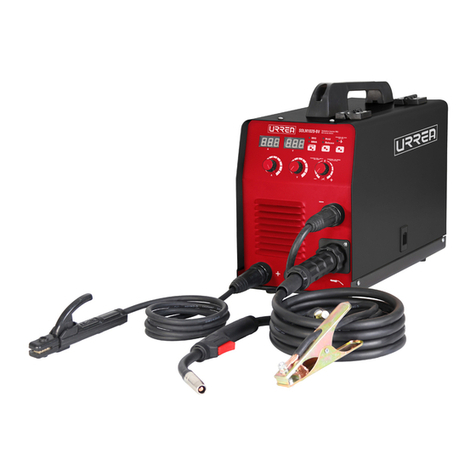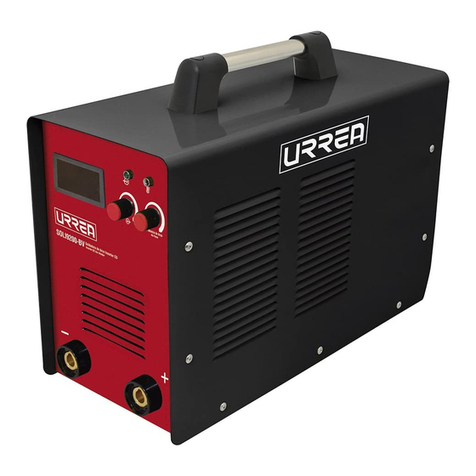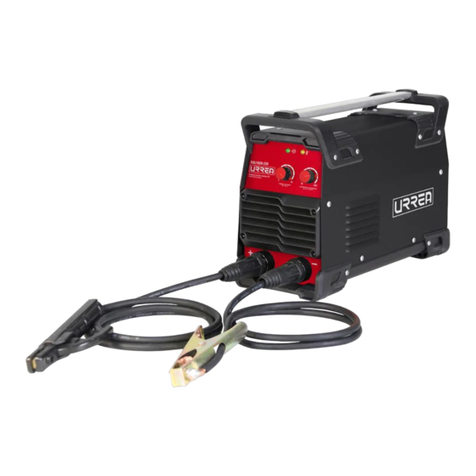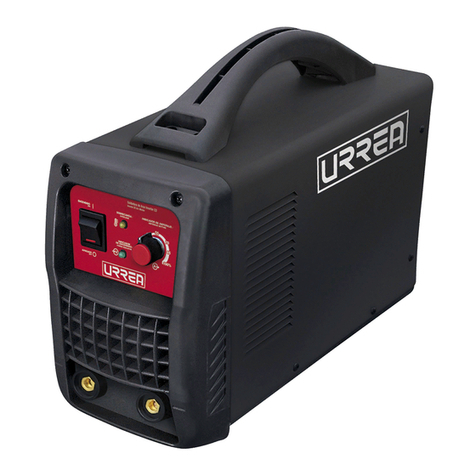
Manual de Usuario
5
ESPAÑOL
1. Indicador de encendido
2. Interruptor de encendido
3. Entrada de enegia eléctrica
4. Indicador de corriente
5. Maneral
6. Conectores de salida
INSTRUCCIONES DE OPERACIÓN
ATENCIÓN: Operar la soldadora en forma
apropiada asegura el funcionamiento satisfac-
torio y prolonga la vida útil del equipo de sol-
dar. Al utilizar la soldadora, asegúrese de que
haya una buena conexión de entrada, salida y
a tierra antes de conectarla a la electricidad.
Soldado
Conecte el cable de alimentación y los cables
de salida de la soldadura (porta electrodo y
pieza de trabajo) tal como lo indica el Ma-
nual del Usuario. Por último, encienda el inte-
rruptor y el ventilador comenzará a funcionar.
ATENCIÓN: Cuando haya distancia entre
la soldadora y la pieza de trabajo, el cable de
soldar debe ser mayor para evitar que la caída
de tensión sea mayor a 4 V.
Ajuste de la corriente de la soldadora
Gire el volante para mover el indicador de
corriente al valor que sea necesario. Después
del ajuste, realice pruebas para asegurarse de
que la corriente sea la correcta. Si es necesa-
rio vuelva a girar el volante para ajustar la co-
rriente. A continuación, inicie a soldar.
NOTA:
Los electrodos se queman a altas temperatu-
ras. Al reemplazarlos, use guantes. El resto de
electrodo reemplazado se debe colocar en
un contenedor metálico. No use el portae-
lectrodo para quitar la escoria del electrodo.
Remoción de Residuos
Una vez que terminó de soldar, utilice un
martillo especial (martillo de herrero) para
desprender los restos de soldadura de la su-
perficie de la barra de soldar.
NOTA:
Quite los restos de soldadura una vez que és-
tos se enfriaron y endurecieron.
Para evitar lastimar a otras personas con los
restos de soldadura, nunca oriente el martillo
hacia personas que se encuentren cerca.
MANTENIMIENTO Y SERVICIO
ADVERTENCIA: El voltaje de solda-
dura es siempre alto, por lo tanto, sea
muy cauteloso antes de reparar el equi-
po para evitar una descarga eléctrica.
• La máquina de soldar es una soldadora ro-
busta. Su uso y mantenimiento apropiados
pueden prolongar su vida útil. La reparación
de la soldadora debe estar a cargo de per-
sonal calificado. Recomendamos a nuestros
clientes ponerse en contacto con nuestra em-
presa o con nuestros distribuidores o agentes
para solicitar servicio técnico, reparación o
accesorios; cada vez que tengan dificulta-
des para solucionar algún problema técnico.
• Si la soldadora a sido recién instalados o que
haya estado en desuso durante algún tiempo,
se deberán inspeccionar las resistencias ais-
lantes entre cada bobinado y entre el bobi-
nado y la caja, en forma exacta, no debiendo
ser inferior a 2.5 M.
• Mantenga la soldadora alejado de la lluvia,
la nieve y de largas exposiciones al sol, si se
usara al aire libre.
• Si no se usa el Equipo de Soldar por un lar-
go tiempo o en forma temporaria, se debe
mantener seco y en un lugar con buena ven-
tilación, que lo mantenga aislado de la hu-
medad, polvo o gases tóxicos. Los rangos de
temperatura tolerables son -25 a +55°C, y la
humedad relativa no puede ser mayor al 90%.
• Periódicamente controle los cables de
entrada y salida del equipo para asegu-
rarse de que estén firmes y bien conec-
tados. Se deben realizar controles men-
suales cuando se utilice regularmente.
• Periódicamente se deberá limpiar el equipo
y hacer el mantenimiento técnico respectivo.
Controle los sujetadores de la máquina, hie-
rro móvil (magnetismo), los tornillos regula-
SOLD9400.indd 5 18/08/15 14:21


